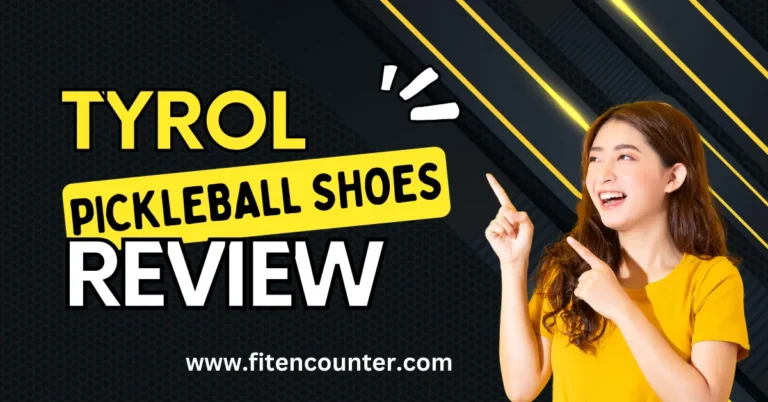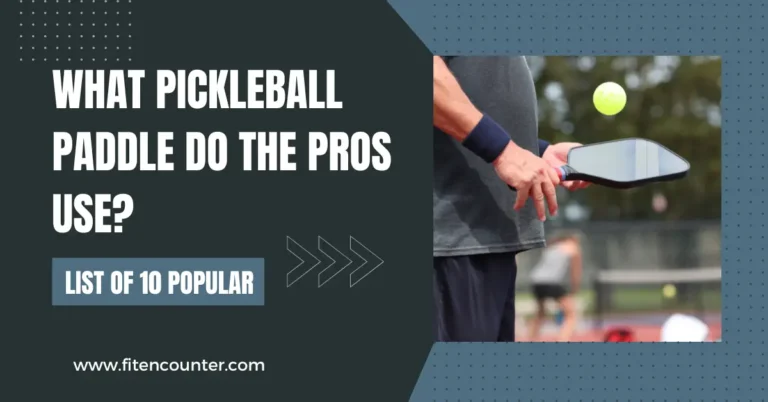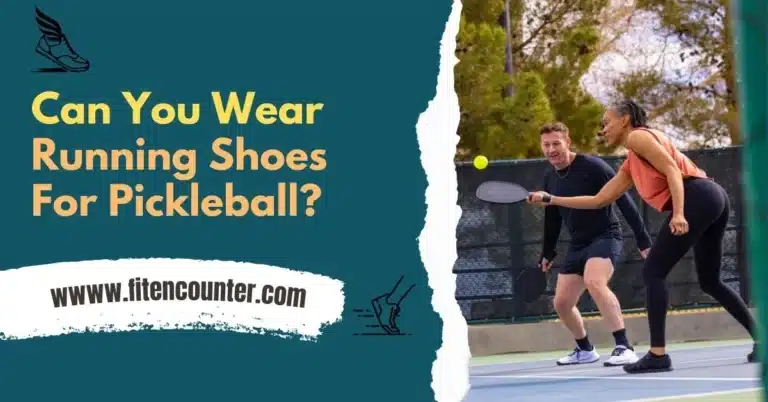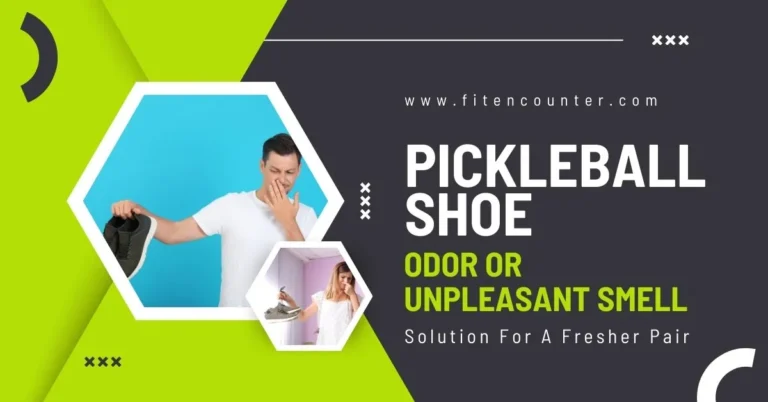Managing Pronation and Supination with Pickleball Shoes: A Comprehensive Guide
To manage pronation and supination in pickleball, first consult with a podiatrist to understand your unique foot patterns. If that’s not an option, don’t worry; we’ve got your back with this guide.
When your foot naturally rolls in or out while playing pickleball, it’s called pronation. But too much of it can cause problems. There are two main issues: overpronation, when your foot rolls too far inward, and supination when it rolls too far outward.
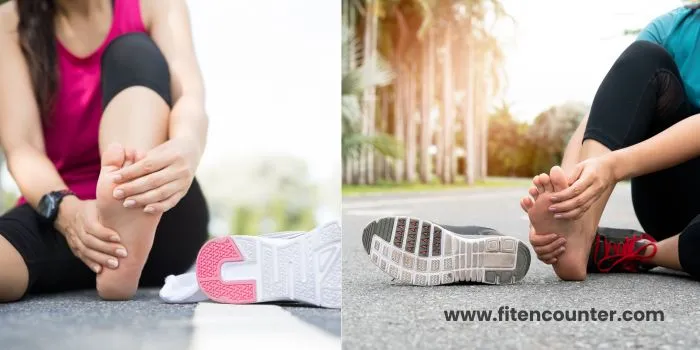
Although you’re not sprinting around like in some sports, those lunges in pickleball can still mess with your feet. That’s why it’s crucial to know about pronation types and figure out if it’s something you need to take care of.
Understanding how your feet move in pickleball can help you with your strokes, side-to-side movements, and how you move on the court. Choosing shoes designed for supination or overpronation can improve your performance on the court. Look for shoes that offer a cushioned midsole, proper arch support and a supportive outsole.
If you don’t pay attention, foot issues can sneak up on you, causing discomfort and problems like heel and back pain. That can mess with your agility and how well you play pickleball. Check out our stretches and exercises to get better at pickleball while reducing injury risks. Let’s get into it!
Can You Play Pickleball with Supination and Overpronation?
You can definitely play pickleball even if your feet tend to supinate or overpronate. The key is to find shoes that offer the right support and comfort for how your feet move. Here’s an overview of all you need to know:
| Pronation Type | Common Foot Type | Detecting Issue | Recommended Shoes for Pickleball |
|---|---|---|---|
| Neutral | Neutral-footed individual | S-shaped normal pattern | Any court shoe |
| Overpronation | Low arches or flat feet. | Wear on the inner part of the shoe | Motion-control running shoes |
| Supination (Underpronation) | High arches | Stress on the outer side of the foot | Shock-absorbing running shoes |
Walking and running are things we do every day, but you also do this thing called “Pronation.” It’s basically the natural side-to-side movement of our feet when we walk or run. Imagine it as a little activity our muscles (posterior tibialis) and ankle joints do. It affects how we walk and whether we might get hurt.
We’re going to dig deep into the different types of pronation. We’ll talk about what makes them unique and what kind of injuries they might bring along. Knowing this is important to keep our feet’ movement optimal during playing pickleball.
Finding Your Neutral Footing
As the name suggests, neutral Pronation means you have nothing to worry about. Picture this: an S-shaped pattern as your foot touches down from the outer heel to the big toe. You get a stable base for your body without any shock impact on your feet.
Understanding Supination or Underpronation
If your feet are swaying sideways, then you might have Underpronation, which is also known as Supination. In terms of Supination, your foot tends to roll outward when it hits the ground. This puts extra pressure on the outer edge of your foot and the smaller toes.
What is Overpronation?
Moving to the other side of the spectrum, let’s get into overpronation. Rolling Inward means you have overpronation. It is a walking or running pattern characterised by the foot landing on the outer heel and excessively rolling inward. This inward roll subjects the inner edge of the foot, especially the big toe and second toe, to undue pressure.
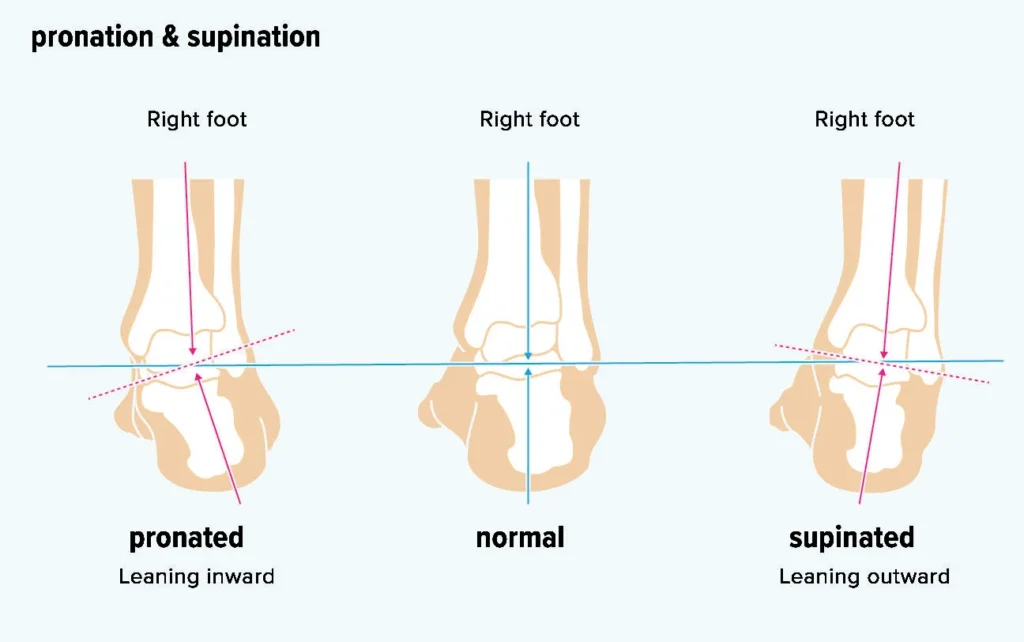
Assessing Pronation and Supination
Get a gait analysis to find out which pronation is yours, or become your own foot detective by using this guide. Spotting the difference by Analysing if you have Pronation or Supination can help you. Let us help you out–Observe these signs while playing or after playing pickleball:
Detecting Overpronation:
Identifying Supination:
Pronation & Supination Shoes for Pickleball
Overpronation and Supination can affect how you play pickleball. If your feet are in the middle (neutral pronation), any court shoe works, but don’t use running shoes. However, the case is different if you overpronate or supinate a lot–You have to use running shoes for the comfort of your foot type.
See the under-given features and look online for footwear with suitable features. Or Check out our picks of Top-rated shoes for pronation and supination for pickleball.
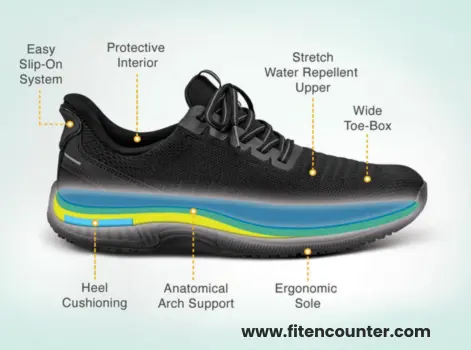
Pickleball Shoes features needed for Overpronation
- Maximum Support and Structured Cushioning:
Overpronators need shoes with maximum support to counter excessive inward rolling. Seek out court shoes with structured cushioning to provide a stable base. This way, the shoes will effectively absorb impact during pickleball matches.
- Medial Post Support:
Choose shoes with medial post support extending to the heel. So, your feet can get targeted reinforcement where it’s needed most. This feature helps correct the foot’s alignment and provides additional support.
- Firm Midsoles for Arch Support:
Another important feature is firm midsoles. Look for this, especially if you have flatter feet. Firm midsoles deliver crucial arch support, maintaining proper alignment and stability during intense gameplay.
- Motion Control Shoes for Severe Overpronation:
Lastly, individuals with severe overpronation should consider motion-control shoes. These feature firm medial or lateral posts. Both of these provide extra midfoot and heel support to prevent excessive pronation.
Best shoes for overpronation in pickleball:
Upon testing, these running shoes are great for playing pickleball with overpronation:
How to choose Pickleball shoes for supination?
Proper Fit:
Ensuring a correct fit is essential, especially for those prone to supination. Opt for shoes that fit both length- and width-wise to stabilise the foot and prevent natural outward rolling. Make sure it’s well-fitted in 3D to reduce the risk of injuries during pickleball sessions.
Cushioning:
Do not go for full plush cushioning! Strike a balance with cushioning; too much can increase lateral movement, while too little may lead to discomfort. Focus on extra cushioning in the heel area, as supinators often strike the heel. This targeted cushioning absorbs impact, enhances comfort, and minimises the risk of injuries.
Ankle Support:
Supination can stress the plantar fascia, potentially causing issues like plantar fasciitis. Choose shoes with adequate ankle support to alleviate this pressure. Look for footwear designed to support the natural movement pattern of the feet. That way, during pickleball, you’ll have a stable lunge without any outward roll or strain on the plantar fascia.
Best shoes for supination in pickleball:
Here are some picks that fit the above boxes!
Tips for Managing Pronation and Supination on the Pickleball Court
Let us give you a guide that offers practical tips for managing these concerns through stretches, exercises, and the use of insoles. Firstly, we recommend prioritising consulting with a healthcare professional for personalised advice before implementing any self-care measures.
Preventing the development or exacerbation of pronation and supination issues is vital for a sustainable pickleball experience. A combination of stretches, exercises, and proper footwear can contribute to maintaining foot health.
Stretching Routine:
Stretches play a crucial role in managing overpronation and oversupination by improving flexibility. They also address tight areas, such as the calf muscles or Achilles tendon.
Here are some personalised stretches you can add to your cool-down routine after playing pickleball:
- Calf Stretches: Stand facing a wall, place one foot behind the other, bend the front knee, and lean into the wall for 35 seconds on each side.
- Arch Stretches: Stand with feet hip-width apart, place a rolled-up towel under one foot’s arch, and rock back and forth.
- Toe Stretches: Sit in a chair, place a towel under your foot, and use your toes to scrunch the towel towards you. Repeat the stretch on the other foot.
- Plantar Fascia Stretches: Stand with feet hip-width apart, roll a tennis ball under one foot’s arch to stretch the plantar fascia, and repeat on the other side.
- Ankle Stretches: Stand facing a wall, place one foot in front of the other, keeping the back heel on the ground. Hold for 35 seconds on each side.
Strengthening Exercises:
For overpronation, include specific exercises like arch lifts, clamshells, pen lifts, and plantar fascia stretches. For supination, focus on calf raises, hamstring stretches, and jumping rope.
Here’s what you need to add to your pickleball warm-up routine: do this before playing pickleball.
- Toe Grip Exercise: Use toes to pick up small objects like marbles.
- Arch Lifts: Elevate arches while keeping heels and toes on the floor, holding for five seconds.
- Clamshells: Lie on your side, knees bent, and open/close knees while keeping ankles together.
- Pen Lifts: Place a pen under your toes, lift your foot to grasp the pen, and repeat on both sides.
- Calf Raises: Stand with both feet raised onto the balls of the feet for calf strengthening.
- Hamstring Stretches: Bend forward at hips, reaching towards toes for hamstring flexibility.
- Jumping Rope: Practice barefoot jumping rope on a carpeted floor.
- Plantar Fascia Stretch: Sit on a chair, cross one ankle over the other, and pull your toes back towards the front of the ankle.
Use Of Insoles
- Custom Orthotics:
Try getting Custom orthotics that are tailored to your feet. These orthotics relieve pain in the feet, legs, and back associated with supination and overpronation. They offer increased stability and durability compared to over-the-counter insoles.
- Shoe Inserts:
If you’re on a budget, try Shoe inserts or orthotics. They also address specific foot issues. Over-the-counter options provide additional arch support for overpronators, outer edge cushioning for supinators, and various other features like heel grips and toe spreaders.
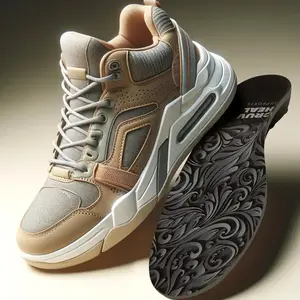
Faqs
What is the recommended choice of footwear for pickleball?
For an ideal pickleball shoe selection, opt for a court-specific shoe. In situations where this isn’t feasible, like foot issues, you can use running shoes that have good traction on courts.
What are the disadvantages of wearing pronation and supination shoes for pickleball?
While these shoes may appear bulky on the court due to extra cushioning, they perform well in terms of functionality.
Can the right shoes help in reducing knee pain while playing pickleball?
Shoes with increased cushioning and shock absorption alleviate knee pain. Running shoes often come equipped with built-in support and cushioning. That’s why we recommend them to get similar benefits.
Final words
That’s all! Don’t let Pronation issues stop you from enjoying pickleball unless your doctor advises it. Managing Pronation and Supination with Pickleball Shoes isn’t impossible. Just incorporate stretches, exercises, and suitable insoles to manage pronation and supination effectively.
Just by doing these exercises and using the right footwear, you’ll elevate your pickleball performance and reduce injury risks. However, if the pain persists, seek professional guidance for personalised solutions to your foot concerns.

